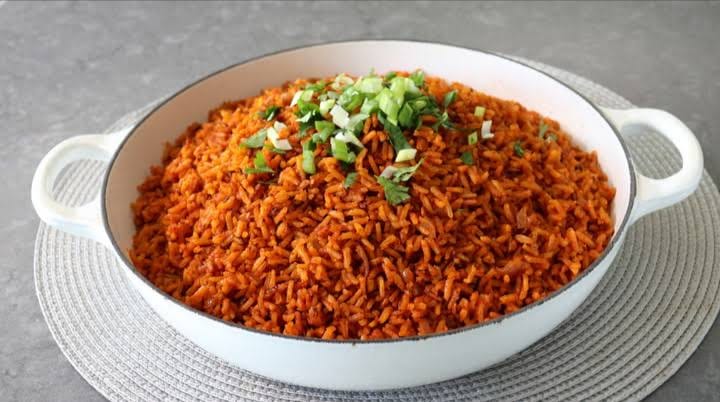After years of debate on the birthplace of the globally acclaimed Jollof rice, a new revelation by UNESCO settles the war, specifically its Ceebu Jën variation, of the true origin of this beloved West African dish. This declaration puts an end to the longstanding dispute over the dish’s origin between Nigerians and Ghanaians. Jollof rice, a delectable combination of rice, tomatoes, onions, pepper, and various spices, boasts diverse recipes and ingredient proportions across different regions.
Is Jollof Rice Senegalese?
Jollof rice, a renowned West African dish with its roots traced back to the Wolof region of Senegal, has garnered popularity across the continent, notably in countries like Nigeria, Ghana, and Gambia. The dish exhibits diverse variations in each country, sparking ongoing debates about its true origin. However, UNESCO has recently resolved the dispute, officially recognizing Senegal as the birthplace of Jollof cuisine, putting an end to the longstanding discussion about its roots.
Read also: Discover the rich history and unique traditions of an African Christmas

Which African country created Jollof Rice?
Senegal stands as the cradle of Senegalese Jollof rice, originating from the Wolof people in the Senegambia region, encompassing modern-day Senegal and The Gambia. Tracing its roots to the period of colonial control in West Africa between 1860 and 1940, research by The Conversation Africa reveals that French colonizers introduced broken rice from Indochina, leading to the creation of Ceebu Jën. The Senegalese began to value broken rice more, turning the dish into a symbol of national and cultural identity.
Recently, UNESCO has bestowed the prestigious designation of being a component of the intangible cultural heritage of humanity upon Ceebu Jën. This recognition is anticipated to bring economic benefits to Senegal, particularly in the realms of tourism, agriculture, fishing, and catering. Beyond its cultural significance, Jollof rice is deeply intertwined with a distinctive way of life, making it not just a culinary delight but a reflection of Senegalese heritage and tradition.
Read also: 7 common misconceptions about Kwanzaa
Which African country has the best Jollof Rice?
Jollof Rice holds a special place in the hearts of many West African countries, each presenting its unique variations and culinary styles. Determining the ‘best’ Jollof Rice is subjective, influenced by individual taste and preference.
For those who enjoy a tomato-based, spicy flavor, Nigerian Jollof Rice may be the top choice. Alternatively, those seeking a more subtle and saucy experience might find satisfaction in the Senegalese version of Jollof Rice. Advocates of Ghanaian Jollof Rice celebrate its distinct spiciness and smokiness as the ultimate culinary delight.
Ultimately, the best version of Jollof Rice is a matter of personal liking. Exploring the diverse offerings from Nigeria, Senegal, and Ghana allows for a delightful journey of flavors, enabling individuals to discover their own favorite rendition of this beloved West African dish.
Read also: The significance of the seven candles in Kwanza celebrations

Which is better, Nigerian Jollof or Ghanaian Jollof?
Jollof Rice stands as a cherished culinary delight in numerous West African countries, with Nigeria and Ghana each contributing their distinct variations to this beloved dish. Renowned for its tomato-based, spicy flavor, Nigerian Jollof Rice showcases a vibrant and robust taste. On the other hand, Ghanaian Jollof Rice has a unique blend of spiciness and smokiness that sets it apart. These regional variations add to the rich tapestry of Jollof Rice, making it a cultural and gastronomic experience.



